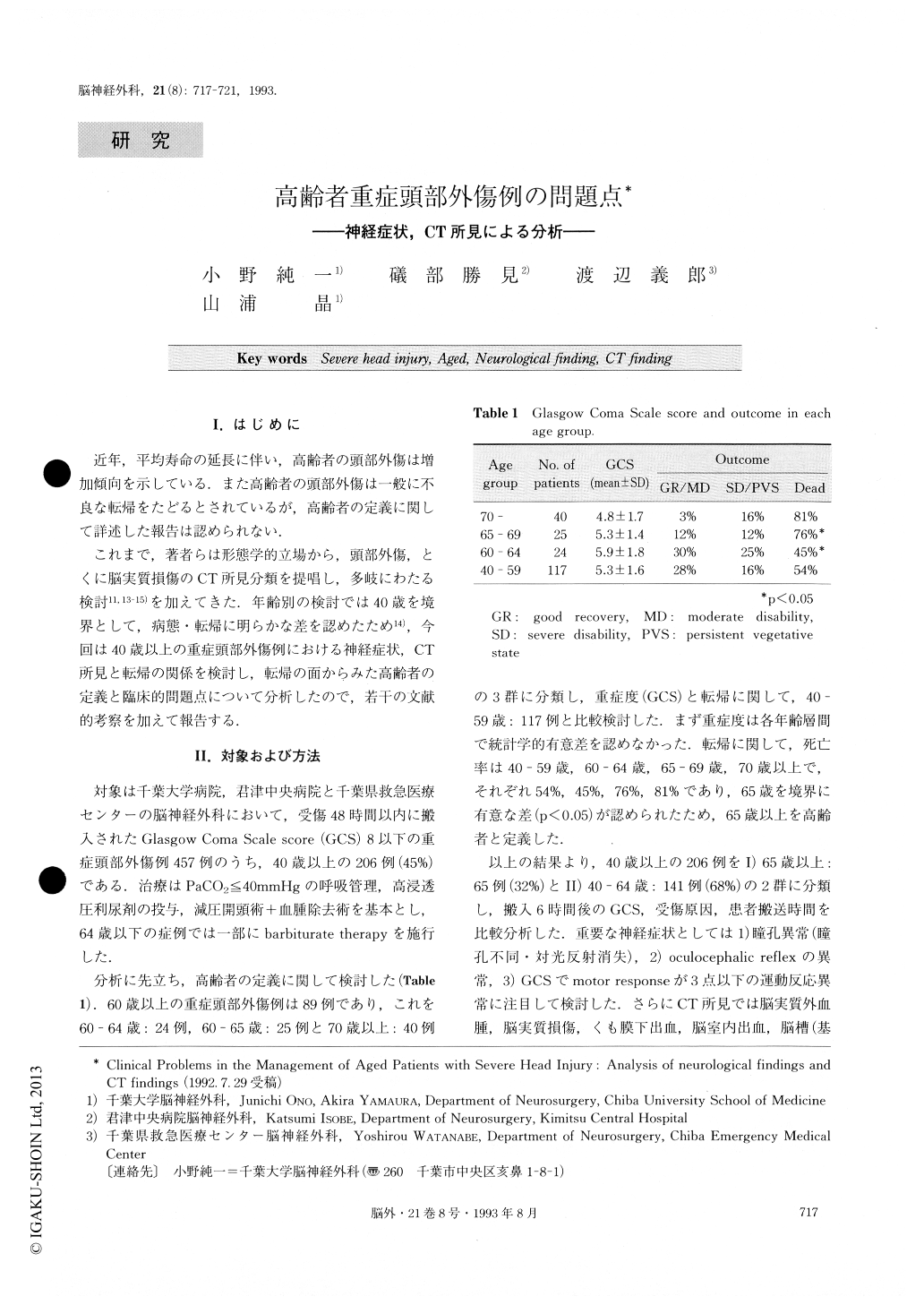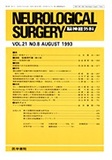Japanese
English
- 有料閲覧
- Abstract 文献概要
- 1ページ目 Look Inside
I.はじめに
近年,平均寿命の延長に伴い,高齢者の頭部外傷は増加傾向を示している.また高齢者の頭部外傷は一般に不良な転帰をたどるとされているが,高齢者の定義に関して詳述した報告は認められない.
これまで,著者らは形態学的立場から,頭部外傷,とくに脳実質損傷のCT所見分類を提唱し,多岐にわたる検討11,13-15)を加えてきた.年齢別の検討では40歳を境界として,病態・転帰に明らかな差を認めたため14),今回は40歳以上の重症頭部外傷例における神経症状,CT所見と転帰の関係を検討し,転帰の面からみた高齢者の定義と臨床的問題点について分析したので,若干の文献的考察を加えて報告する.
Aged patients were defined as those of 65 years or more of age.
Among 457 patients with severe head injury [Glasgow Coma Scale score (GCS) of 8 or less], sixty-five aged pa-tients (14%) were analyzed with special reference to their pretreatment neurological status, CT findings and out-come in comparison with 141 (31%) of those from 40 to 64 years of age.
As a cause of injury, the incidence of traffic accidents and falls and tumbles did not differ statistically in both groups. Neither did the severity (GCS score) significant-ly differ in the two groups. Three important neurological findings [pupillary abnormality, impaired or absent ocu-locephalic reflex and poor motor response (GCS motor score s 3)], were analyzed as the prognostic factors. Poor motor response was the sole finding that was signi-ficantly more frequent in the aged.
On CT in the aged, acute subdural hematoma was most common among the extraparenchymal hematoma. Hemorrhagic lesions were the more common paren-chymal lesions. On the other hand, diffuse cerebral swell-ing was rare in the aged.
The outcome was significantly poor in the aged ; only 6% had good outcome (good recovery and moderate dis-ability), and 80% died.
In conclusion, these results suggested that the poor outcome was due to severe primary brain damage added to poor brain plasticity in the aged.

Copyright © 1993, Igaku-Shoin Ltd. All rights reserved.


